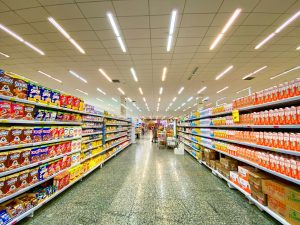Shelf Appeal: How Smart Packaging Boosts Grocery Sales


Photo by Nathália Rosa on Unsplash
Walk down any grocery store aisle, and you’ll see hundreds of food products competing for consumer attention. In such a crowded marketplace, taste and quality are no longer enough to guarantee success. Brands must also compete for visibility and usability, often within the split second it takes a consumer to scan the shelf. For today’s food brands, packaging isn’t just a finishing touch, it’s a business strategy.
The modern shopper is busy and often overwhelmed by choice. With so many products offering similar ingredients or nutritional profiles, packaging plays a decisive role in purchase behavior. A product that is easy to spot, quick to understand, and simple to use will likely win the sale, even over a competitor with a similar or even superior product.
According to a recent Grocery Dive article, “a growing number of people view Trader Joe’s and Aldi as primary destinations for grocery shopping even though the retailers carry a smaller selection of products than traditional supermarkets.” If additional grocers move to this smaller-scale model, brands will need to find ways to set themselves apart and attract more consumers.
Functionality has become a significant differentiator as accessibility takes center stage in packaging conversations. Packaging that feels accessible and user-friendly can foster trust and loyalty. For example, innovations that make jars easier to open can have a meaningful impact on people with mobility limitations or reduced hand strength. While this may seem like a small feature, it demonstrates a broader commitment to inclusivity, a value that resonates strongly with consumers.
Packaging innovations like the EEASY Lid, designed to reduce the force needed to open a jar, highlight how thoughtful packaging can elevate the entire customer experience. When incorporated into a product line, such innovations can make a brand more appealing across age groups and abilities, contributing to greater brand affinity and differentiation.
As consumer expectations evolve, so must the tools brands use to meet them. Investing in packaging that prioritizes accessibility is no longer a luxury, it’s a necessity.
In a world of endless choice, the brands that win are those that make their product not just better, but easier, more inviting, and more thoughtful to use. And often, it all starts with the package.